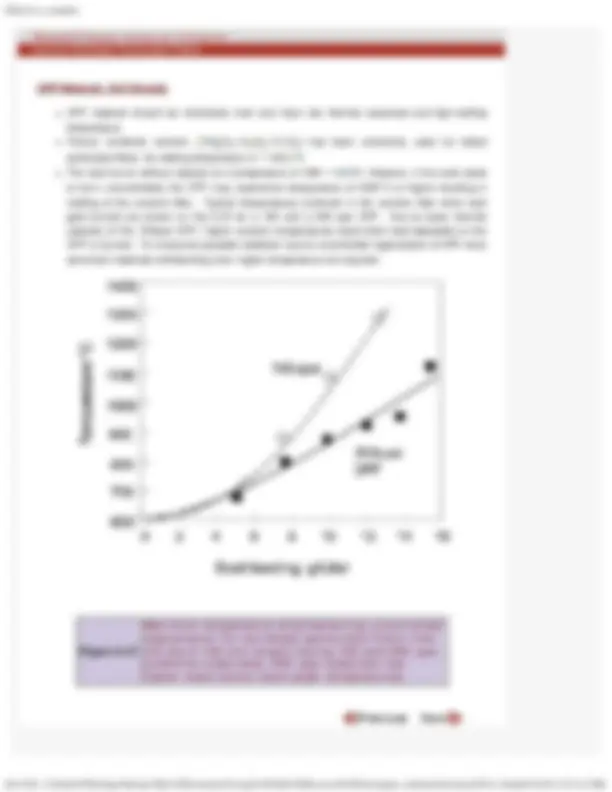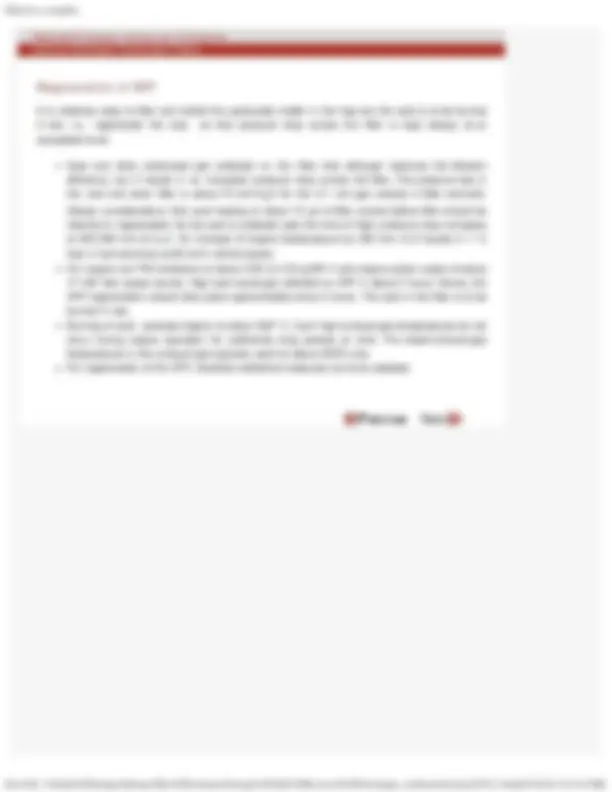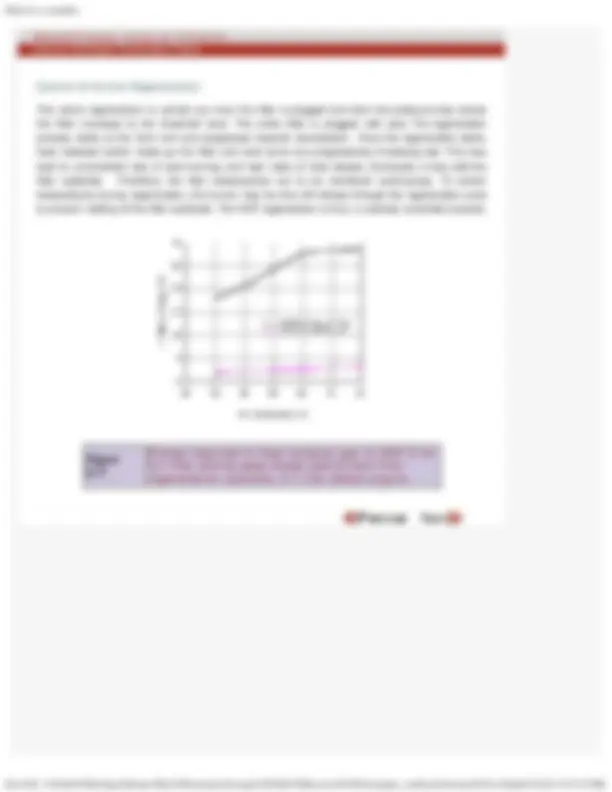






Study with the several resources on Docsity

Earn points by helping other students or get them with a premium plan


Prepare for your exams
Study with the several resources on Docsity

Earn points to download
Earn points by helping other students or get them with a premium plan
Community
Ask the community for help and clear up your study doubts
Discover the best universities in your country according to Docsity users
Free resources
Download our free guides on studying techniques, anxiety management strategies, and thesis advice from Docsity tutors
The major points are: Diesel Particulate Filters, Ceramic Honeycomb Type, Ascceptable Pressure Drop, Cell Density, Soot Holding Capacity, Pore Size, Types of Regeneration Systems, Burner Upstream of Filter, Engine Throttling, Burner Regeneration
Typology: Study notes
1 / 8

This page cannot be seen from the preview
Don't miss anything!





Diesel particulate filters (DPF) also called as ‘particulate traps’ have been developed to filter out PM from the diesel exhaust gases to meet very stringent emission limits. Alumina coated wire mesh, ceramic fiber, porous ceramic monoliths etc., have been studied as filtration media. Presently, ceramic monolith of honeycomb type structure is used to trap the particulate matter as the gas flows through its porous walls. These filters are also termed as ‘ceramic wall flow filters’. A ceramic honeycomb type particulate filter is shown in Fig. 6.14. In this cellular structure, alternate cells are plugged at one end and open at the opposite end. The exhaust gas enters the cells that are open at the upstream end and flows through the porous walls to the adjacent cells. The adjacent cells are open at the downstream end from where the filtered gas exits .to the atmosphere. Flow path of gas through walls of the filter is also shown on Fig 6.14.
Some advantages of wall flow filters over other filtration media are;
The wall flow filters have a large filtration surface area per unit volume The pore size of walls can be controlled to provide gas flow without excessive pressure drop. Very high filtration efficiencies close to 98% are possible with ascceptable pressure drop.
High melting point materials of ‘NZP’ family like Na , and silicon carbide ‘SiC’ have also been developed for diesel particulate filters. Melting point of NZP material is and of SiC of about 2400º C. Diesel particulate filters commonly have a cell density of 100-cpsi or 200 cpsi with 0.30 to 0. mm wall thickness. The 200-cpsi substrates provide 41 % higher filtration area but have a higher pressure drop. Filters with circular cross section are mostly used due to their superior mechanical strength and high thermal resistance as they experience less severe temperature gradients and have more uniform temperature distribution. Cylindrical filters are easy to pack and install on vehicle. Filter size is normally equal to the swept volume of the engine.
For good mechanical strength, wall porosity is kept about 48-50%. Pore size range from 12 to 35 μm.
Pore size of about 35 μm gives filtration efficiency of 60-75% 20 to 25 μm pore size filters are used for 80-90 % efficiency and 12 to 14 μm pore size for efficiency > 90%.
With higher pore size filtration efficiency as well as pressure drop is low. Hence, optimization of pore size, cell density and wall thickness is essential.
Soot loading before regeneration ranges 5 to 10g/ l volume of substrate. When a 10-20 μm pore size DPF was loaded with soot in the range of 5 to 10 g/liter of substrate volume, pressure drop was 7 kPa and 11 kPa with 5 and 10-g/liter soot loading, respectively.
It is relatively easy to filter and collect the particulate matter in the trap but the soot is to be burned in-situ i.e., ‘ regenerate ’ the trap so that pressure drop across the filter is kept always at an acceptable level.
Soot and other particulate get collected on the filter that although improves the filtration efficiency, but it results in an increased pressure drop across the filter. The pressure loss in the new and clean filter is about 70 mm H 2 O for the 0.1 m/s gas velocity in filter channels. Design considerations limit soot loading to about 10 g/l of filter volume before filter should be cleaned or regenerated. As the soot is collected upto the limit of 10g/l, pressure drop increases to 300-350 mm of. An increase of engine backpressure by 350 mm results in 1 % loss in fuel economy at 65-km/h vehicle speed. For engine out PM emissions of about 0.25 to 0.33 g/kW-h and engine power output of about 17 kW/ liter swept volume, 10g/l soot would get collected on DPF in about 2 hours. Hence, the DPF regeneration should take place approximately every 2 hours. The soot in the filter is to be burned in-situ. Burning of soot particles begins at about 540º C. Such high exhaust gas temperatures do not occur during engine operation for sufficiently long periods of .time. The diesel exhaust gas temperatures in the exhaust pipe typically reach to about 300ºC only. For regeneration of the DPF, therefore additional measures are to be adopted.
Burner Regeneration
A diesel fuel burner is placed in the exhaust in front of the filter to regenerate the diesel particulate filter. This system can perform at all engine speeds and loads. Two types of system have been used;
In the full flow system the total exhaust gas is to be heated to about 540º C. A large air pump for the burner and high burner fuel consumption are needed. Complex electronic controls to regulate burner fuel flow to maintain safe levels of gas temperature at inlet of filter are necessary. In the bypass system, only a small part of exhaust is allowed to flow through the filter when regeneration is carried out. A smaller air pump is required. A bypass burner regeneration system is shown on Fig 6.16. Regeneration process is independent of engine operating conditions, as the filter during regeneration is isolated from the engine exhaust. The fuel consumption by the burner to heat the inlet face of the filter to 540º C is an order of magnitude lower compared to the full flow system. The relative magnitudes of energy required to raise the exhaust temperature to 540º C in the full flow and bypass type burner regeneration system (10 % of total flow) are presented in Fig 6.17 for a 5.7 liter diesel engine.
The inlet face when heated to 540º C, soot oxidation begins. Increase in temperature of the gas accelerates combustion of soot further. The burning process progresses from the front and oxidizes soot in the remainder of the filter.
Control of Active Regeneration
The active regeneration is carried out once the filter is plugged and when the pressure drop across the filter increases to the threshold level. The entire filter is plugged with soot. The regeneration process starts at the front end and progresses towards downstream. Once the regeneration starts, heat released further heats-up the filter and soot burns at a progressively increasing rate. This may lead to uncontrolled rate of soot burning and high rates of heat release. Eventually, it may melt the filter substrate. Therefore, the filter temperatures are to be monitored continuously. To control temperatures during regeneration, the burner may be shut off midway through the regeneration cycle to prevent melting of the filter substrate. The DOF regeneration is thus, a carefully controlled process.